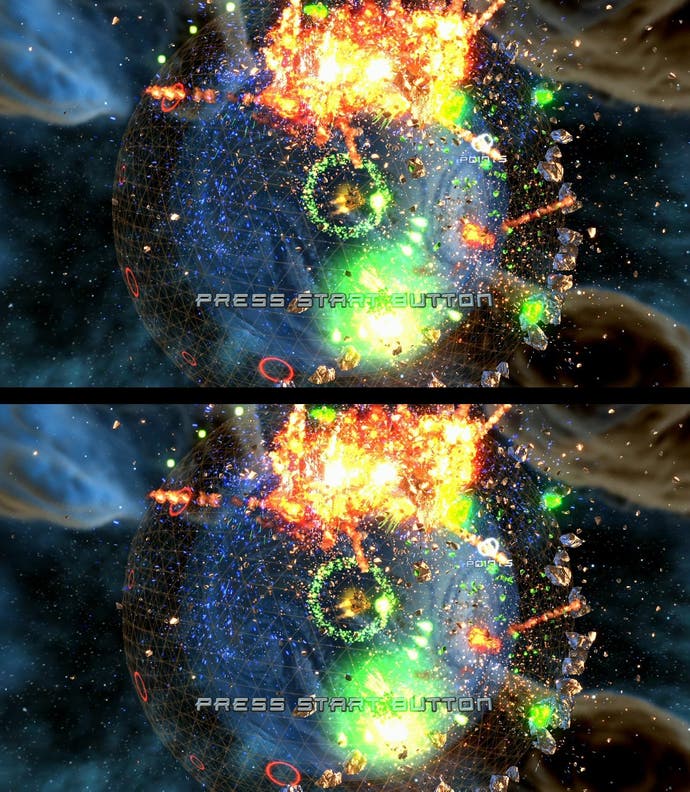In Theory: Is Xbox 360 3D Ready?
Microsoft says "yes". Digital Foundry investigates.
While Sony and the PlayStation 3 are doing most the pioneering work in establishing stereoscopic 3D gaming, Microsoft's public approach has been to ignore this new dimension in gameplay, instead concentrating its resources and marketing on its Kinect motion control system.
"We're a fully 3D-capable console today. We support 3D games that are in the market today," Microsoft's Aaron Greenberg told VG247.
"If you look at things like Avatar and the new Batman game, and some of the titles that were announced in 3D [at E3] like Crysis 2, they're coming to Xbox 360. There's no confusion that anyone looking for a 3D gaming experience will find those same experiences on the Xbox. We're also demoing here, behind closed doors, movies in 3D running on Xbox 360. The capability is there. The question is whether or not the consumer demand is there. That's the unanswered question. We're not a consumer electronics company that's trying to sell 3DTVs, so we have the benefit of waiting until the market responds. We're going to take probably more of a pull than a push approach."
However, behind the scenes, the platform holder is beginning to take 3D gaming seriously - something that will become very apparent within the next 12 months. Third party developers are already being briefed by Microsoft on the ways and means in which the now vintage console can be made to run with the new wave of 3DTVs. While Microsoft itself may be adopting Greenberg's "pull rather than push" approach, it is at least offering support to publishers looking to support 3DTVs.
Ubisoft has been at the forefront of 3D, is upbeat about the take-up of the displays and foresees that many of its major titles will support the system. The new Shaun White and Ghost Recon titles are set to include stereoscopic 3D support.
"I do believe that Avatar allowed us just a little bit of advantage in terms of experience with how this market will work," Ubisoft UK managing director Rob Cooper told MCV.
"We are working to offer the possibility of 3D on most of our upcoming triple-A titles as we'd like to ensure that we are there for those consumers that begin putting new 3D enabled televisions in their homes."
The question is, can the Xbox 360 meet the technical standard for stereoscopic 3D set down by the HDMI 1.4 protocols, and supported by the PlayStation 3?
Real 3D - as in proper, full-on HDMI 1.4 stereoscopic 3D in the 1280x1470 twin 720p framebuffer configuration - may well be a problem for the Xbox 360. Here's where things get complicated. In terms of the basic capabilities of the Xenos GPU, the resolution should in theory be a walk in the park. Probably the closest version of the 360's graphics architecture on PC is ATI/AMD's R520 (found in the X1x00 cards), capable of a maximum resolution of 2560x1600. Even its predecessor could process 2048x1536, at 75Hz, no less.


However, Xenos is a bespoke part made for 360 only, with its own unique properties - the 10MB daughter die of eDRAM for starters. Not only that, but all output from the GPU is routed through the HANA video processor - the chip that converts the framebuffer into HDMI, component, and legacy standard def outputs. Connect up the 360 to a DVI monitor and you can see that HANA is a pretty useful piece of kit: it's able to support just about any single-link DVI resolution - even relatively obscure ones such as 1440x900.
However, notable by its absence is 1920x1200, the de facto standard top-end resolution for single-link DVI, and utilised by a large amount of 24" LCDs, and from several of our developer sources, we've learned there's still no support for it in the current revision of the upcoming Kinect dash, nor is there implementation of the HDMI 1.4 720p stereo 3D format when a 3DTV is attached.
Quite why it is missing is a bit of a puzzle: its omission suggests that HANA has set limitations to vertical frequency, which may preclude the 1280x1470 HDMI 1.4 set-up used by the PlayStation 3. And even if it can output the resolution, there's no guarantee that HANA would be able to offer HDMI 1.4 handshakes to the 3DTV. After all, the chip was designed years before the HDMI 1.4 standard was even being considered.
Our developer sources inform us that Microsoft is now accepting that 3D will form a part of the Xbox 360's future, and is recommending either side-by-side or top-bottom approaches to the visual make-up of the 3D framebuffer. The obvious conclusion is that the games we play will be operating at half-resolution, similar to the pre-alpha version of Killzone 3 seen at E3, with the image created from two 640x720 images.








